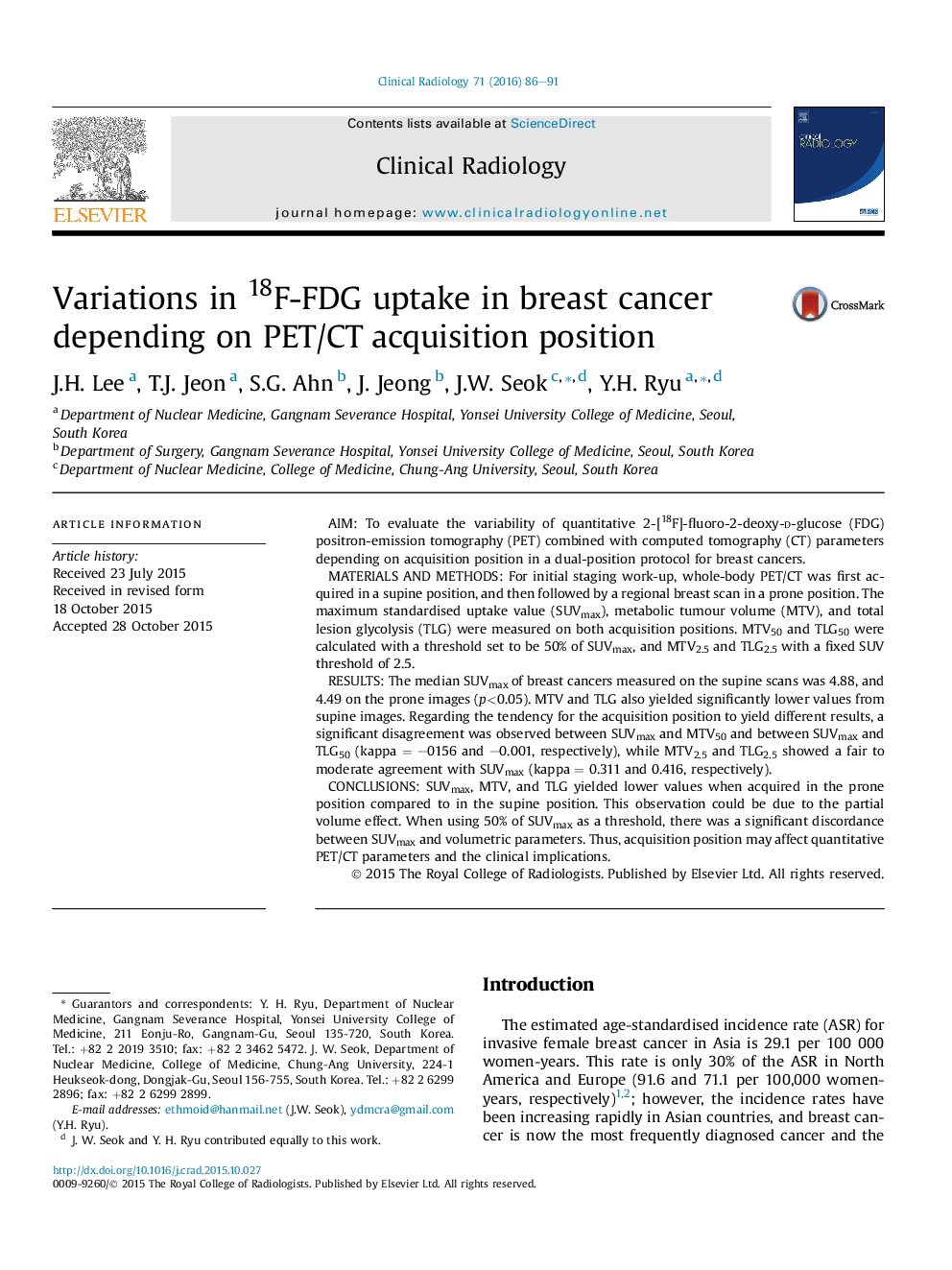| Article ID | Journal | Published Year | Pages | File Type |
|---|---|---|---|---|
| 3981452 | Clinical Radiology | 2016 | 6 Pages |
•After standard supine PET scan, regional breast images are obtained in prone position.•SUVmax of breast cancer yield lower values when acquired in prone position.•Position-dependent variability can be due to the partial volume effect.•MTV and TLG show discordant results with SUVmax when using 50% SUVmax as a threshold.
AimTo evaluate the variability of quantitative 2-[18F]-fluoro-2-deoxy-d-glucose (FDG) positron-emission tomography (PET) combined with computed tomography (CT) parameters depending on acquisition position in a dual-position protocol for breast cancers.Materials and methodsFor initial staging work-up, whole-body PET/CT was first acquired in a supine position, and then followed by a regional breast scan in a prone position. The maximum standardised uptake value (SUVmax), metabolic tumour volume (MTV), and total lesion glycolysis (TLG) were measured on both acquisition positions. MTV50 and TLG50 were calculated with a threshold set to be 50% of SUVmax, and MTV2.5 and TLG2.5 with a fixed SUV threshold of 2.5.ResultsThe median SUVmax of breast cancers measured on the supine scans was 4.88, and 4.49 on the prone images (p<0.05). MTV and TLG also yielded significantly lower values from supine images. Regarding the tendency for the acquisition position to yield different results, a significant disagreement was observed between SUVmax and MTV50 and between SUVmax and TLG50 (kappa = –0156 and –0.001, respectively), while MTV2.5 and TLG2.5 showed a fair to moderate agreement with SUVmax (kappa = 0.311 and 0.416, respectively).ConclusionsSUVmax, MTV, and TLG yielded lower values when acquired in the prone position compared to in the supine position. This observation could be due to the partial volume effect. When using 50% of SUVmax as a threshold, there was a significant discordance between SUVmax and volumetric parameters. Thus, acquisition position may affect quantitative PET/CT parameters and the clinical implications.
